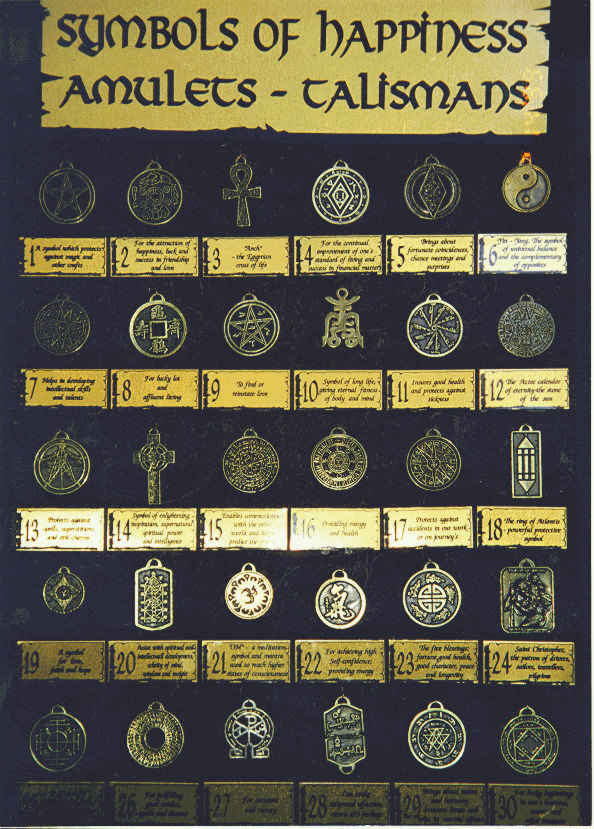|
Talismans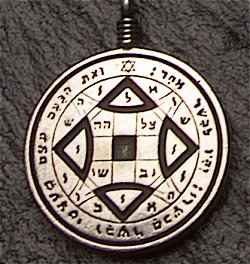 No matter how much they try to deny it, almost every religion involves a component of Witchcraft, usually in the form of some power symbol or object that offers a measurable benefit to true believers. Otherwise, what would be the point?
No matter how much they try to deny it, almost every religion involves a component of Witchcraft, usually in the form of some power symbol or object that offers a measurable benefit to true believers. Otherwise, what would be the point?Easily the most widespread of these occult objects is the talisman. With the exception of a few hardline graven-image-abhorring Protestant Christians, virtually every religion in human history has offered adherents small decorative objects which purport to do anything in a range between healing boils and guaranteeing eternal salvation. From occultists to Benedictine monks, you won't find many people who haven't owned some sort of talisman at some point in their lives. A talisman is a small object, often metallic, which contains an inscription or etching designed to accomplish some specific purpose. Talismans are often worn on the body, most commonly as rings or amulets.
Early talismans often featured symbols of sacred geometry, such as mandalas, pentagrams, hexagrams and spirals. The oldest talismans consist of symbols scratched into stones, sometimes with a hole cut for a cord, allowing the object to be worn as a pendant. The most common association with the word talisman is the medieval incarnation of the object. Starting in the Dark Ages, humanity's love affair with the occult kicked into high gear. Medieval sorcerors would inscribe intricate designs on flat pieces of metal, which would be worn as an amulet. The designs were usually derived from grimoires, or spellbooks, which purported to contain ancient esoteric secrets.
(The Tetragrammaton was actually YHVH, the Hebrew root for Yahweh, or Jehovah, according to the Kabbala and the Old Testament. The letters make an acronym in Hebrew for "I Am Who Am," which is how the Burning Bush described itself to Moses. At one time, this was a closely guarded secret, though it's been pretty much Rosebudded at this point. Later, medieval revisionists would decide that YHVH wasn't secret enough, claiming that there was an even more secret name. One such was AGLA, but there were a number of variations in circulation.) Western civilization eventually emerged from the Dark Ages (arguably), but the talismans survived. The Catholic Church was (and remains) a great purveyor of the goodies, often spiced up with a bone chip or dried intestine from a saint, Relics which were hot commodities during the Middle Ages and well through the Renaissance. Of course, the church in those days rarely missed an opportunity to turn a profit on schlock merchandise, such as medals and free passes to heaven (known as indulgences).
Many Catholic saints also have medal talismans of their own, with various beneficial properties appropriate to each saint's jurisdiction. St. Francis medals are very popular, and St. Christopher rides many a dashboard, magically deploying his metaphysical airbag on behalf of the passengers. Another popular Catholic item is the scapular, which is two pieces of cardboard attacked by string which retails (even today) for $14.99. But you aren't just paying for cardboard and string. For instance, the Padre Pio scapular (shown here) guarantees eternal life in Heaven to anyone struck down while wearing it, or your money back. (Since Padre Pio isn't even a saint yet, this might be some kind of bootleg item.) Although the Christians had an early start mass-producing sorcerous merchandise, talismans are also very popular among Hindus, Taoists and Buddhists. And Hindu and Buddhist talismans are even more popular among non-Hindus and Buddhists!
Buddhist and Taoist talismans and medals (featuring mandalas, yin-yangs, Chinese and Japanese alphabet symbols, or I-Ching hexes) are very popular with enlightened Westerners, a small minority of whom are rumored to have taken the time to learn what the symbols mean before buying a pendant or having it permanently tattooed on their bodies (this claim could not be independently verified).
|
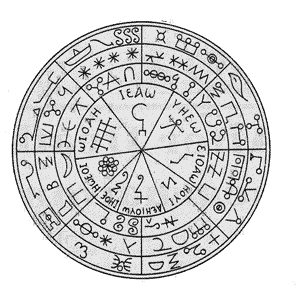 Some of the earliest artifacts of human civilization are talismans. The ancient Egyptians were fans of the ankh, a heiroglyph which symbolized bread, and by extension, life. Amulets featuring ankhs were worn by the living and especially the dead, as part of early cryogenic suspension programs.
Some of the earliest artifacts of human civilization are talismans. The ancient Egyptians were fans of the ankh, a heiroglyph which symbolized bread, and by extension, life. Amulets featuring ankhs were worn by the living and especially the dead, as part of early cryogenic suspension programs. 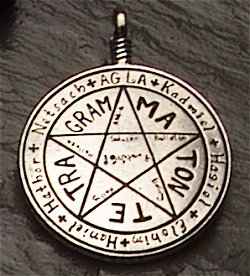 Medieval grimoires were largely derived from Christian
Medieval grimoires were largely derived from Christian 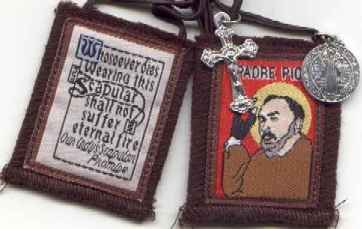 The love for the knick-knacks outlived the Roman church's commercial heyday, however. Although certain cultural groups are notorious for their extra-special love of the products, it's a rare Catholic indeed who makes it past puberty without being the recipient of at least one talisman of some sort. The Virgin Mary is particularly inspiring on this front, with a whole host of medals depicting her in various ubervirginal activities such as being Assumpted or weeping for the evil scum of the Earth.
The love for the knick-knacks outlived the Roman church's commercial heyday, however. Although certain cultural groups are notorious for their extra-special love of the products, it's a rare Catholic indeed who makes it past puberty without being the recipient of at least one talisman of some sort. The Virgin Mary is particularly inspiring on this front, with a whole host of medals depicting her in various ubervirginal activities such as being Assumpted or weeping for the evil scum of the Earth.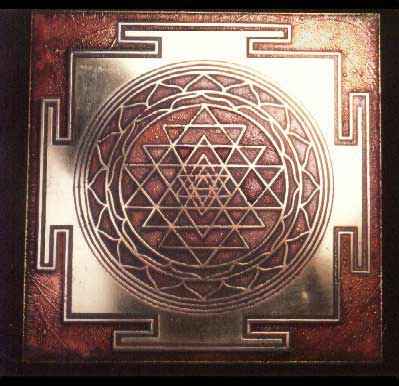 Hinduism features almost as many deities as Catholicism has saints, and every one of them has seven or eight incarnations, as well as three or four situation-specific poses (dancing, seated, standing, handsprings, German suplex, etc.). So for any given Hindu deity, there are about 13,450 talisman possibilities, which are usually straight up likenesses of the deity in question, without all the pretentious inscriptions and secret words. But then, what would you expect from a culture where the deities regularly do cameos in just about any genre of movie? At times, Hindu talismans seem more like action figures than high magic.
Hinduism features almost as many deities as Catholicism has saints, and every one of them has seven or eight incarnations, as well as three or four situation-specific poses (dancing, seated, standing, handsprings, German suplex, etc.). So for any given Hindu deity, there are about 13,450 talisman possibilities, which are usually straight up likenesses of the deity in question, without all the pretentious inscriptions and secret words. But then, what would you expect from a culture where the deities regularly do cameos in just about any genre of movie? At times, Hindu talismans seem more like action figures than high magic. 